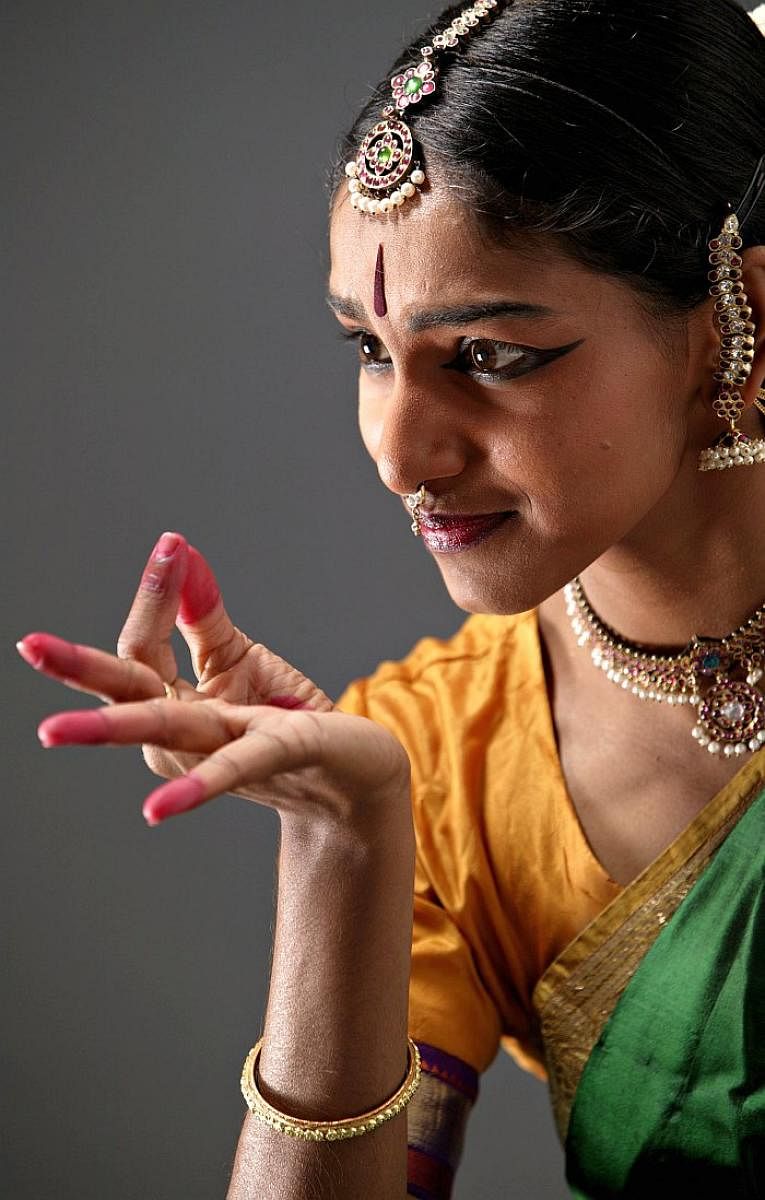
To Shantala, named befittingly after the celebrated dancing queen of the Hoysala kingdom, dance is an offering. Like mythology, it is timeless. It reflects life, its emotions and perceptions. Unlike fusion, which she has never pursued, the pure Indian classical dance is a spiritual process — a window to another dimension which enables the dancer to go beyond the mundane — to become one with life.
A prodigy of Global India, in whom the East rests with ease in the West, Shantala, is an internationally acclaimed persona known for her seamless boundaries across traditional kuchipudi dance, theatre and contemporary dance.
Her young career has stretched across legends such as Guru Vempati Chinna Satyam, Peter Brook, Maurice Bejart, Pina Bausch, Bartabas, Japanese choreographer Ushio Amagatsu, to name just a few. As kuchipudi is so deeply anchored within her, it allows her the freedom to collaborate and explore movement and different means of expressivity. She feels her experience in different styles feed off one another, and helps her stay adaptable and fluid, without changing her core.
Born in Madras but raised in Paris, she is as spiritually Indian as you can find. She was drawn into spirituality she says, through Swami Chinmayananda’s interpretation of the Bhagavad Gita, The Autobiography of a Yogi and exposure to Swami Ramana Maharishi. Every visit to India sees her in Ramanashram in Thiruvannamalai or Isha Ashram in Coimbatore, amongst other temples and places of spiritual energy.
What works...
Constantly spanning and criss-crossing the world, travel to her, is an eye-opener to the intrinsically different people she comes across, the many ways to live life and to find out what works for you, to accept and be less rigid, embrace life in all its diversity and come to a real inclusiveness of experience.
Following a very disciplined, self-imposed lifestyle, Shantala practises meditation and hatha yoga every day and keeps this routine irrespective of her destination. It is this discipline combined with the many hours of intense practice that gives her an effortless energy, a heightened alertness which translates into a scintillating abandon in dance while yet keeping her mind focused on her movements and the audience during a show.
Shantala’s mother Savitry Nair, a renowned Bharatanatyam dancer and dance teacher who trained in Kalakshetra,taught her in her formative years. A constant presence from the beginning, she is the central and most stable figure in her life. Her mother’s an honest, though annoying critic, Shantala says and adds that she is constantly challenging her to push her boundaries. Her father, a former diplomat at UNESCO, is an accurate judge and she gauges herself in his vision, she confesses.
After her rangapravesam conducted by Master Vempati at Kalakshetra, she toured Europe as part of the group with him and Vempati Ravishankar. It was an unforgettable learning experience, which taught her the magic of connecting with the musicians and the audience. She understood that a traditional style can only evolve through thorough mastery combined with innovation, aesthetic creativity and freedom which transform the style from the inside, while yet retaining its unique identity, essence and flavour.
The way to be...
Shiva Ganga, which premiered in 2004, brought out the latent creativity in choreography with Bhajan Rhoom Jhoom, where she portrayed the playful Radha and Krishna. Inspired by Master Vempati, the freedom to explore possibilities was exhilarating. “It brings out the innate you, the way your body feels like moving and just the way you want it to be,” she exclaims. This was followed, amongst many others, by Namasya in 2007— a programme built around two solos involving Pina Bausch, German dancer and choreographer, and Ushio Amagatsu, the renowned Japanese choreographer. “As much as I am fascinated with delving deeper into the practice of Kuchipudi, my desire to explore the path of contemporary dance is equally compelling,” says Shantala.